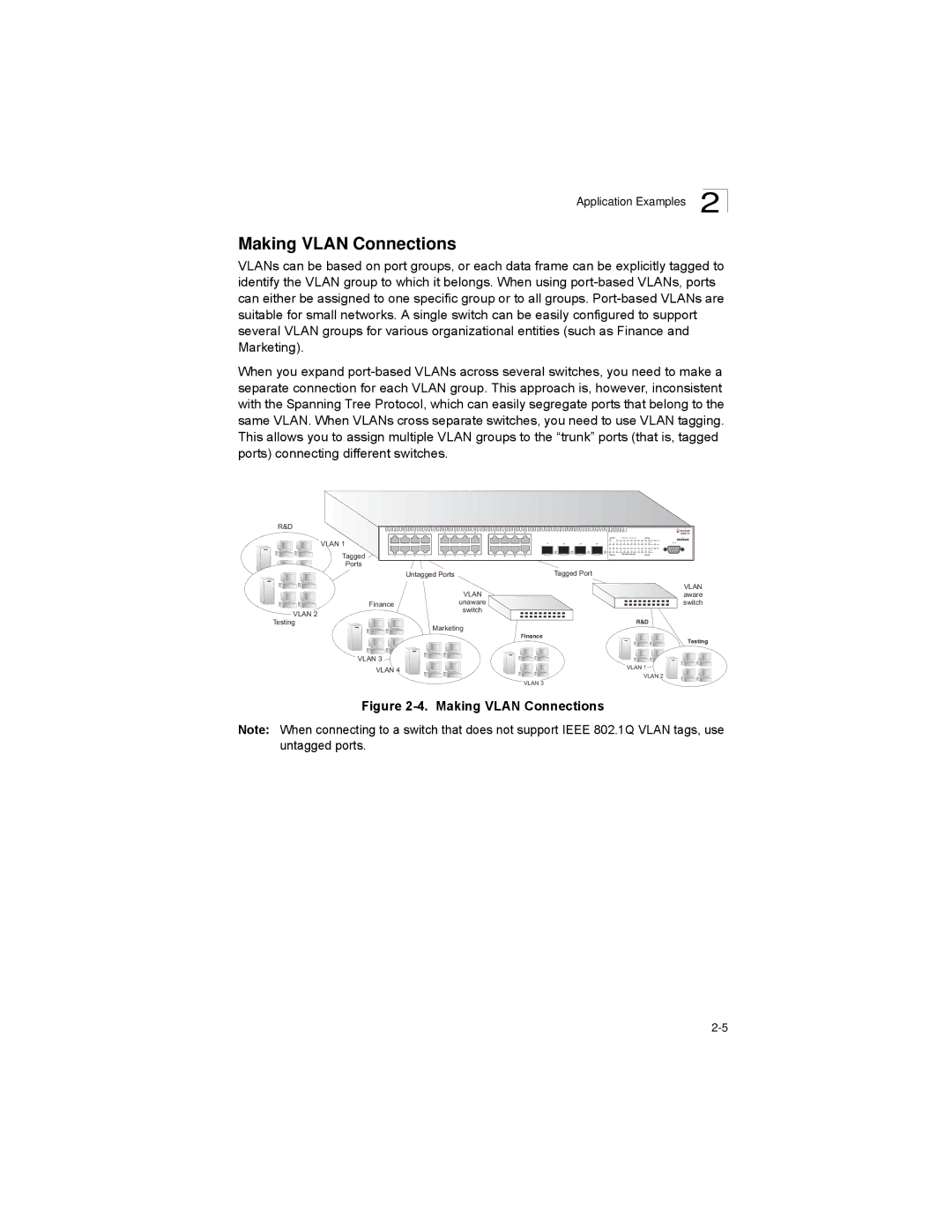
Application Examples 2
Making VLAN Connections
VLANs can be based on port groups, or each data frame can be explicitly tagged to identify the VLAN group to which it belongs. When using
When you expand
R&D
VLAN 1
Tagged
Ports
| OmniStack |
| |
1000=Green 10/100=Yellow |
|
Link/ | Power |
Act | Console |
FDX | Diag |
Link/ | BPS |
Act | |
FDX |
|
Untagged Ports | Tagged Port |
Finance
VLAN 2
Testing
VLAN 3
VLAN 4
| VLAN |
VLAN | aware |
unaware | switch |
switch |
|
| R&D |
Marketing
Finance
Testing
VLAN 1 |
VLAN 2 ![]()
![]()
VLAN 3
Figure 2-4. Making VLAN Connections
Note: When connecting to a switch that does not support IEEE 802.1Q VLAN tags, use untagged ports.
